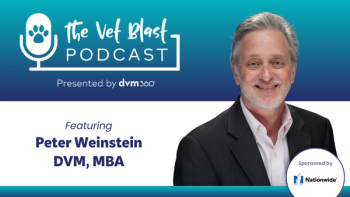
I was the profit hole!
First, I thought the revenue problem was the new associate at my veterinary practice. Yeah, it wasn't.
To watch Fetch dvm360 speaker Kathryn Primm, DVM, share a financially thoughtful and slightly embarrassing story about who wound up being the weak link in her hospital's revenue chain, click on the video at the end of this article. Read on to get all the sordid (OK, not that sordid) details ... We all joke about the saying, “It's not you, it's me” when it comes as an excuse during a breakup. But when I noticed that my practice had stopped growing at the rate I wanted, this saying developed a new meaning for me.
Here was the situation: I always watch my metrics, and my practice growth had reached a point where I added a full-time associate. Since that change, I watched the metrics even more. I knew there would be a transition period as the associate settled in, and I thought we were near the end of that self-imposed timeline. Sure, I'd been pleasantly surprised by the growth we achieved even with the added expenses up to that point, but now things needed to “get real.” I had added doctor hours, so I should have been seeing the impact on my growth numbers.
To see whether my practice was supporting that new full-time associate, I looked into three big metrics: average per-client transaction (PCT), new client numbers and patient visits. The average PCT tells me that we're recommending all the needed treatments for each pet to the clients, which equals doing right by the pet and the hospital. The new-client numbers help me gauge my marketing efforts. The total patient visits include existing clients and help me track my follow-up visits and response to reminders. Here's how it looked:
- Our new-client numbers were reasonable and growing (although this number is never high enough for me, but that's a whole 'nother article).
- Our number of patient visits showed an increase over last year to date. That's what we want!
- Our average PCT had showed only a minor increase (but wasn't going down), and gross income showed minor growth, but not what I projected. Why?
Well, I expected a certain rate of growth because we'd expanded our number of doctor hours. More hours to see patients should increase numbers on patient visits, if nothing else, provided there are patients to see. Patient numbers were increasing. I could check that box. Our gross income had grown, but not what I expected with the added hours.
We were seeing more patients. Our average PCT was roughly the same. Why would our gross income not reflect that? We seemed super busy! It seemed like we never sat down. What gives? Is there something I was overlooking?
Yup. I was overlooking me and my individual veterinarian PCT.
When I looked at my and my associate's productivity on an individual basis, I saw my own PCT had fallen. My poor associate had grown hers enough to balance out mine. What did that mean for us? It meant that I was working harder and not smarter. I was seeing more patients, but doing less for each one, and the bottom line reflected that.
Lesson learned: It's important to pay attention to each individual doctor's productivity. It appeared that, when my practice was overly busy without the associate, I'd gotten rushed and lazy about making complete recommendations for each pet. I suppose it can happen to anyone, but the moral of this story is, remember to look at your own metrics. The problem just might lie with you.
CVC educator Dr. Kathryn Primm owns Applebrook Animal Hospital in Ooltewah, Tennessee, but has a growing career as a writer, a speaker and an online voice for veterinarians and pet owners alike. She was also the nation's first Fear Free certified professional.
Newsletter
From exam room tips to practice management insights, get trusted veterinary news delivered straight to your inbox—subscribe to dvm360.



